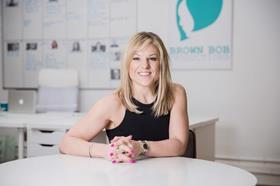Brown Bob Production’s Nicki Gottlieb on the future for fixed-rig shows
I vividly remember the taster tape we produced for season one of Inside the Ambulance for UKTV five years ago. Back then we were only really starting to investigate the full power of GoPro camera technology and how it could be intertwined into broadcast television.
But there we were, gaffer tape and soldering irons in hand, as well as a few back and forth trips to Maplin electronics store, attempting to figure out how exactly to assemble the first edition of a camera rig that would go on to define our company.
It was only really later in the edit suite - where we were patiently holding our breath - that we finally knew everything had come together.
As the footage rolled across the various monitors, we knew we were operating in a completely different space; a new way of working where our camera technology had empowered us to shoot completely new levels of intimacy (in our case close-up scenes between paramedic and patient) that wouldn’t have been possible with a four-person cam-era, sound and lighting crew.
Since those early years, we’ve gone through many different generations of GoPro technology and have adapted our rig multiple times.
Speedy evolution
At the same time, the fixed-rig camera genre has also evolved quickly - but what’s next for this fast moving, high volume area of programming?
From my perspective, camera rigs are only going to become more and more self-sustaining over the coming years. We’re already moving on from what is known as the ‘hand of the producer rig’ and are now entering a new phase of ‘rig and leave’, where you can operate cameras remotely without actually having anyone on location.
During these times of uncertainty, where everyone is social distancing and self-isolating because of the coronavirus outbreak, this is a particularly topical way of filming. ‘Working remotely’ has certainly had the spotlight shone on it and there’s no doubt this has already rippled through to the production sector. Indeed, maybe we will soon start to see a growing number of remote technology-driven programmes being produced, where rigs are used instead of using large numbers of people on the ground?
Cost-effective
Whichever way things head, there’s huge room for this genre to grow. Not least because improved camera technology will reduce operating costs for all concerned, and that’s what our increasingly squeezed broadcasters will want: to find different ways to make more on limited budgets. The advantage of rigged camera shows is that they lend themselves to high volume series; they can be filmed quickly and edited in a reasonably speedy manner. So, at a time when broadcasters’ schedules are continuously altering due to the COVID-19 crisis, these programmes are an attractive proposition to help fill their gaps, often at a cheaper rate then other access-led documentaries.
Next stop, America
But where’s the next frontier for rig-driven factual series? The answer: potentially the US. Whereas the UK now has a strong track record of producing these shows, America - on the whole - just doesn’t tend to produce them in quantity – so far.
It’s one of the main reasons we at Brown Bob recently launched our first US office, with the aim of replicating our way of working for American audiences. There is certainly an intrigue around rig-led shows out there, and a huge opportunity to make a mark at a time when more and more new factual and niche channels are being launched. Things are changing, and as technology evolves along with channels’ demands for high volume series, this could be a unique opportunity for the genre.

Nicki Gottlieb is co-founder and co-CEO of Brown Bob Production

































No comments yet